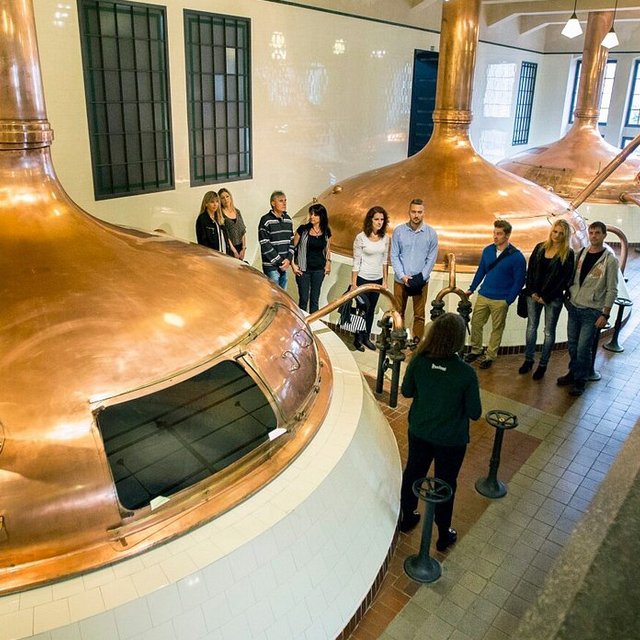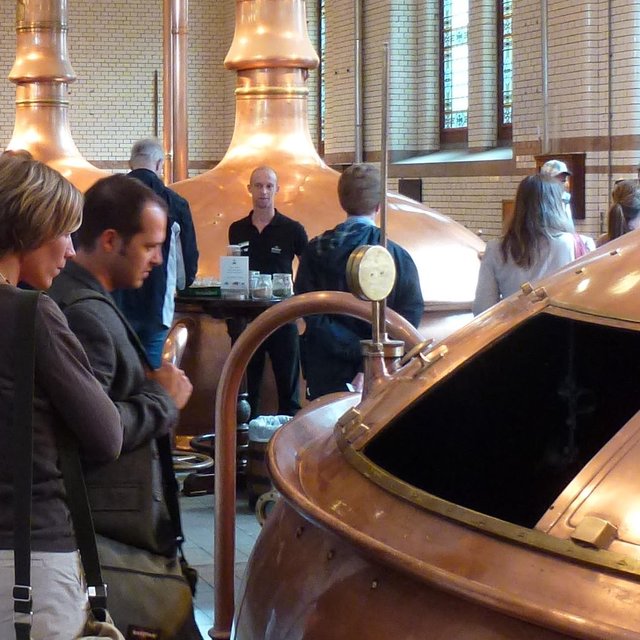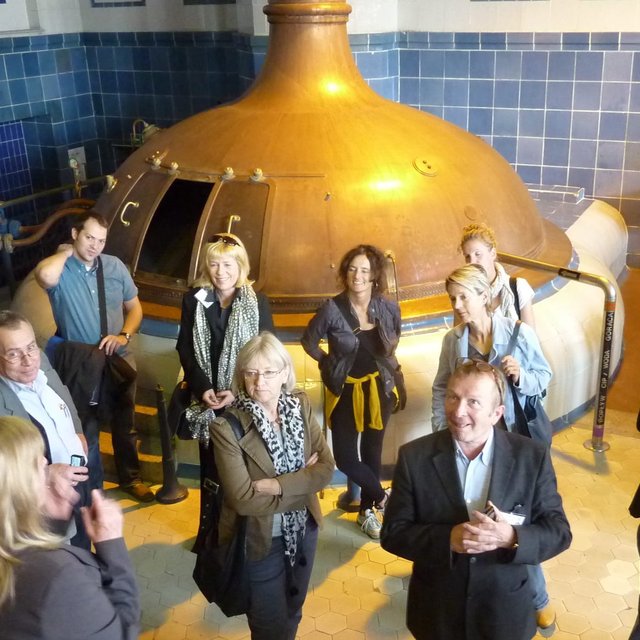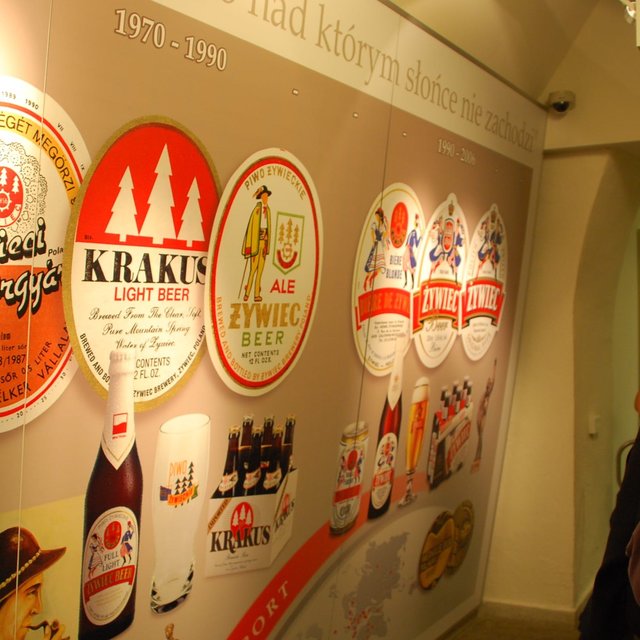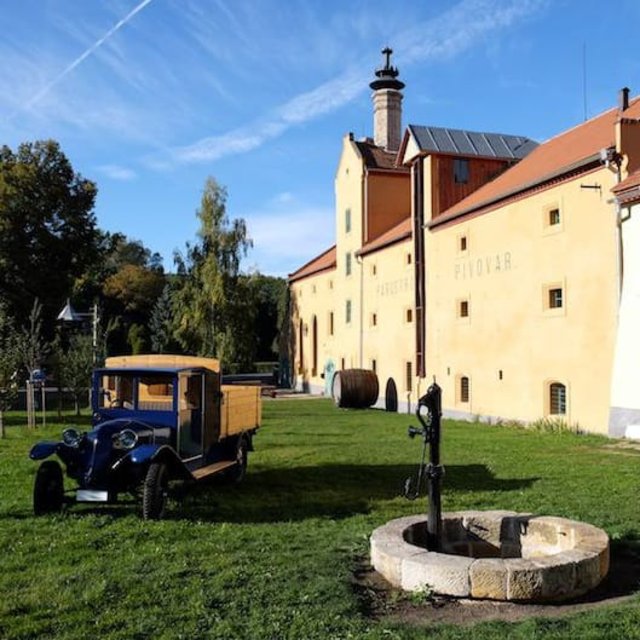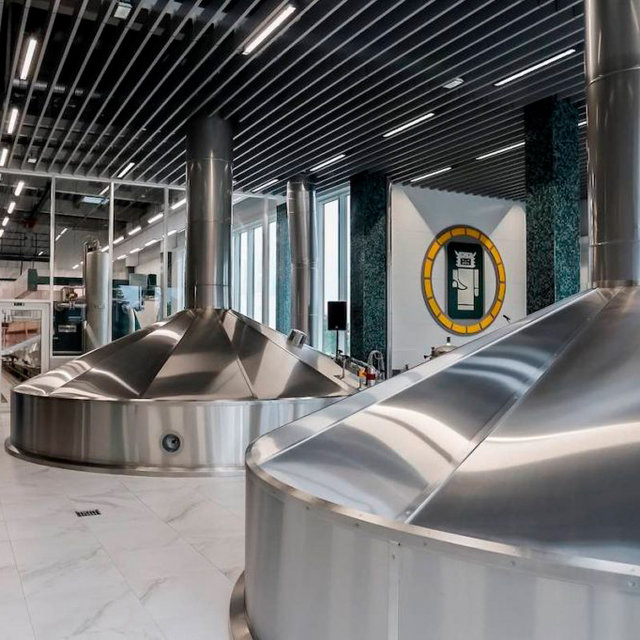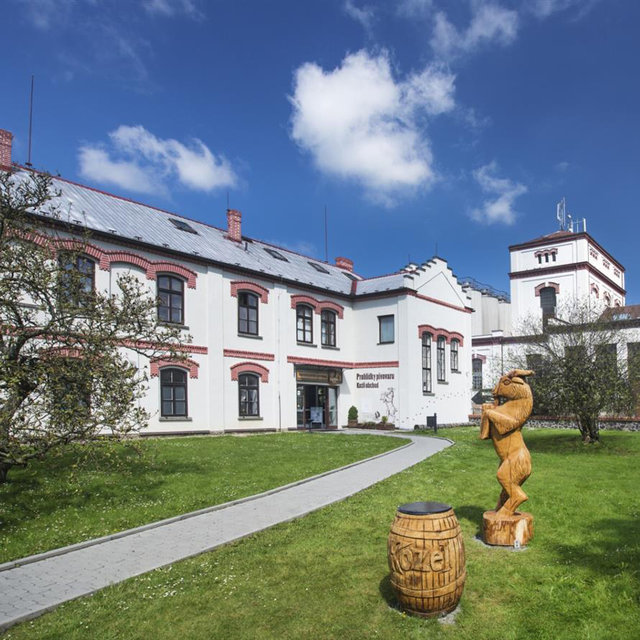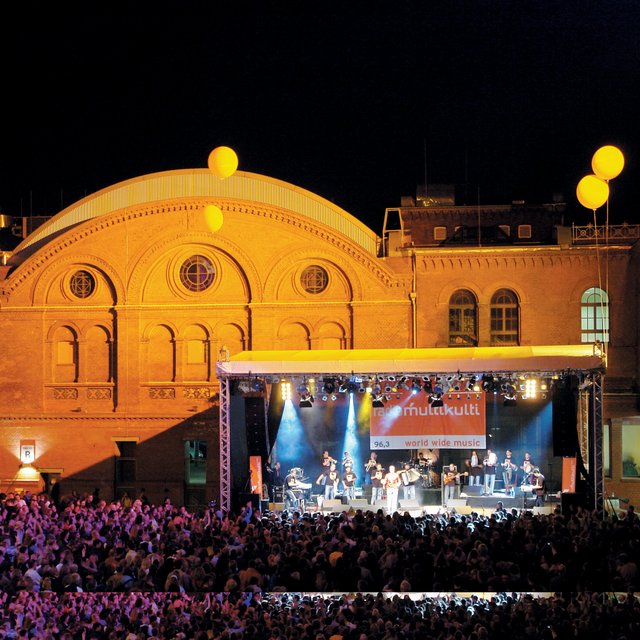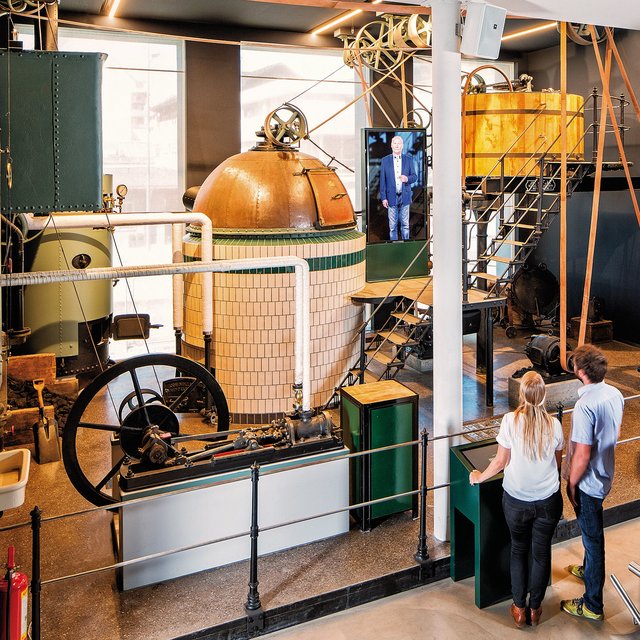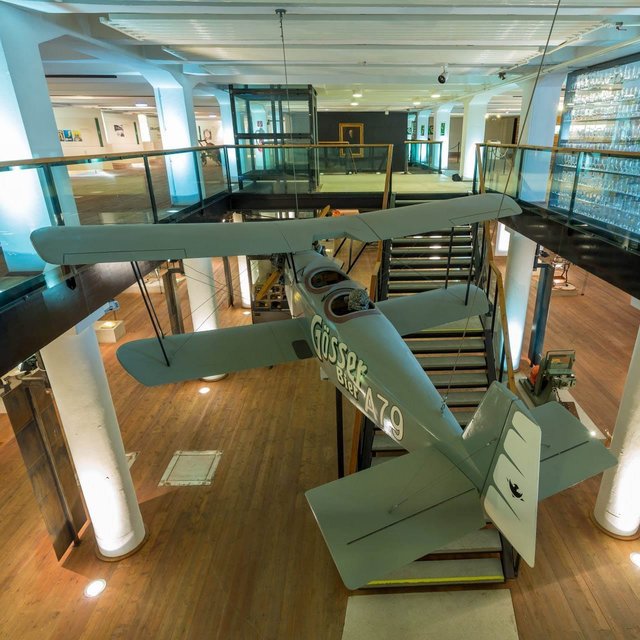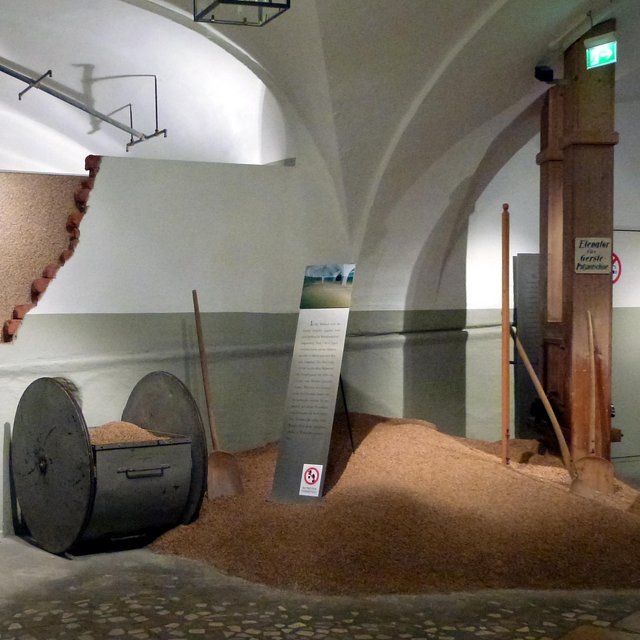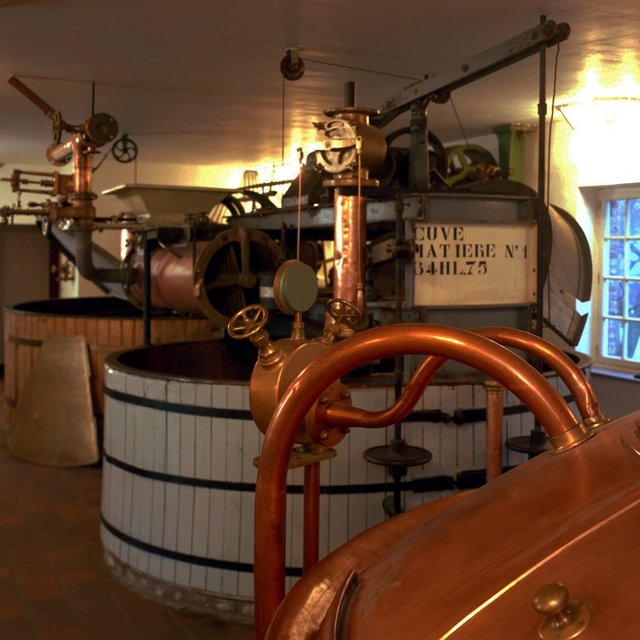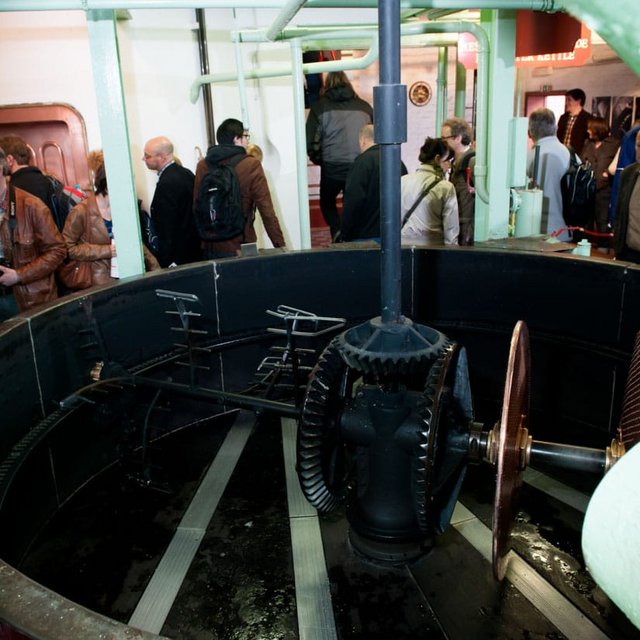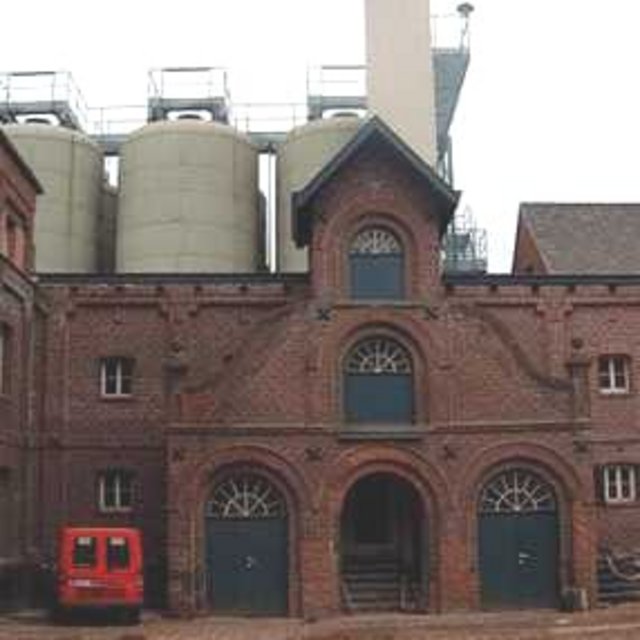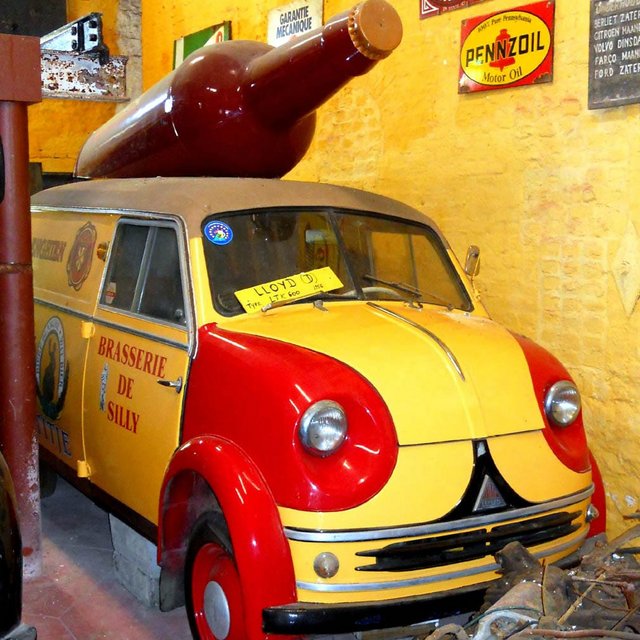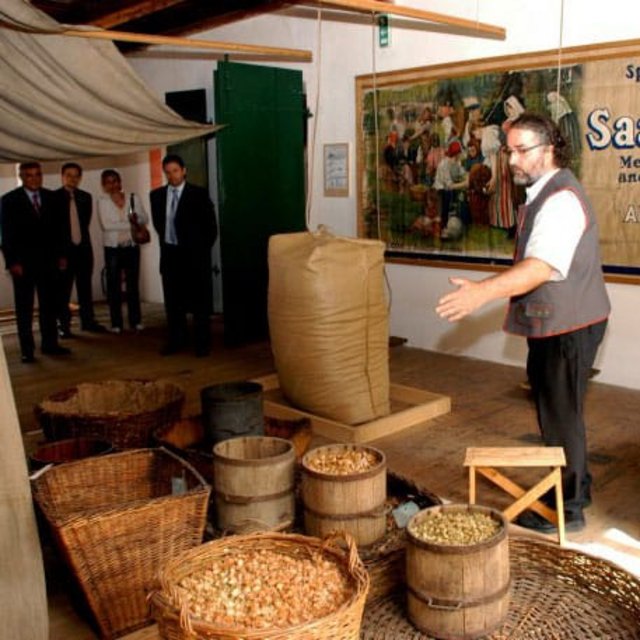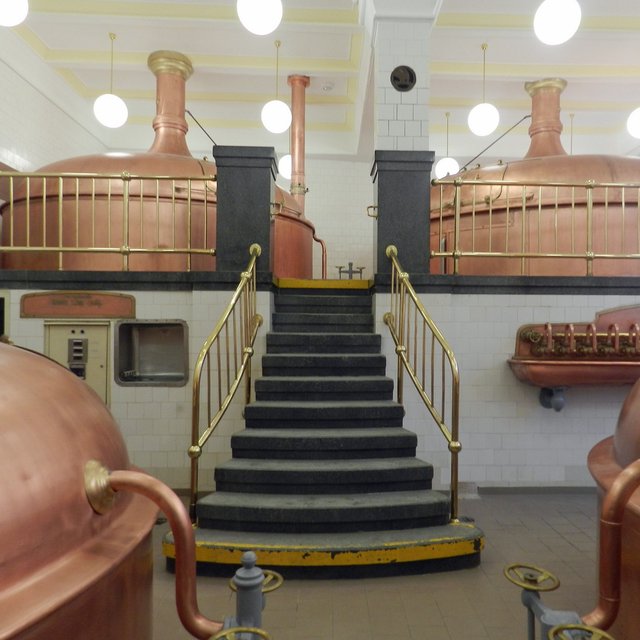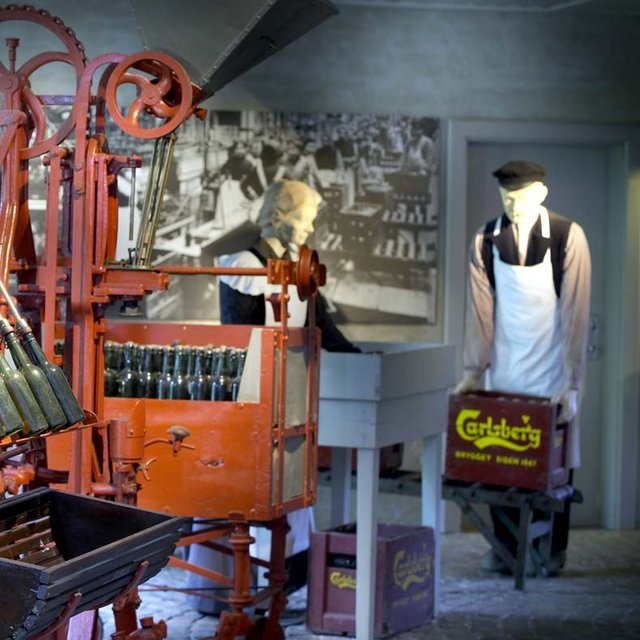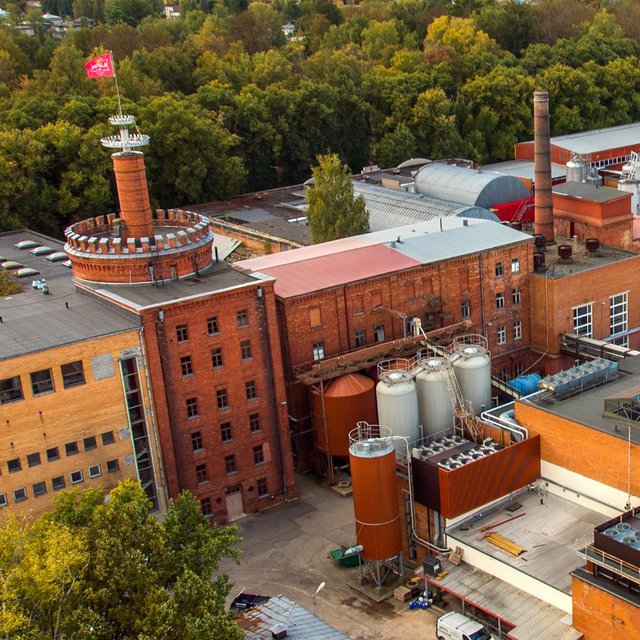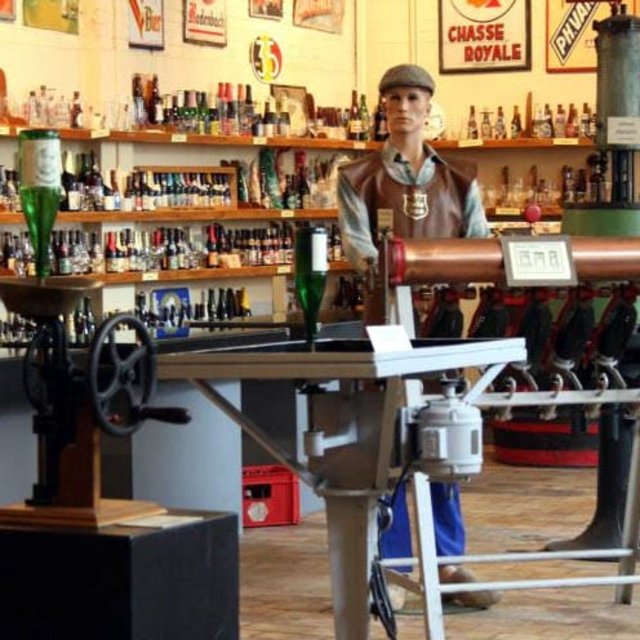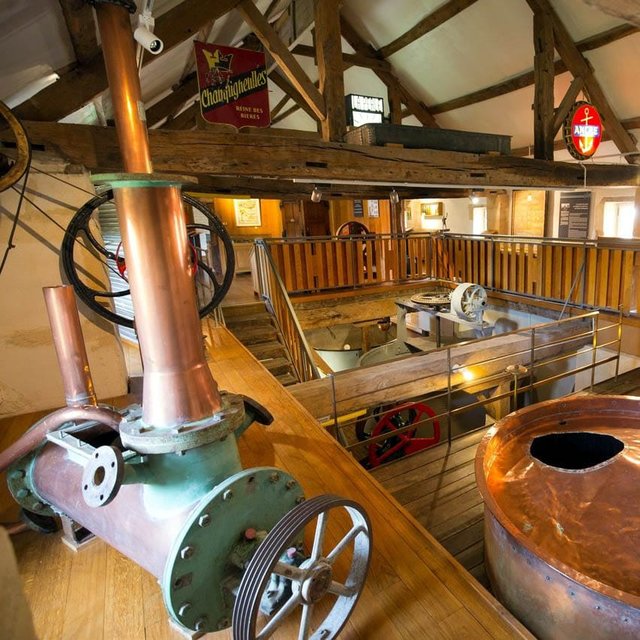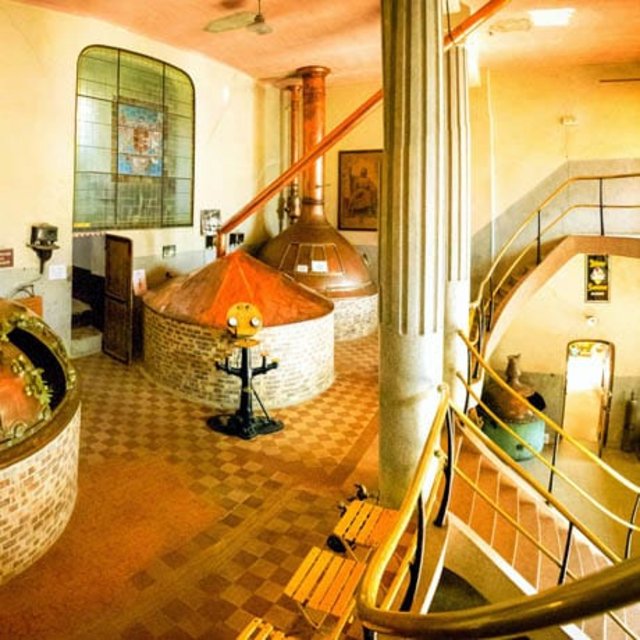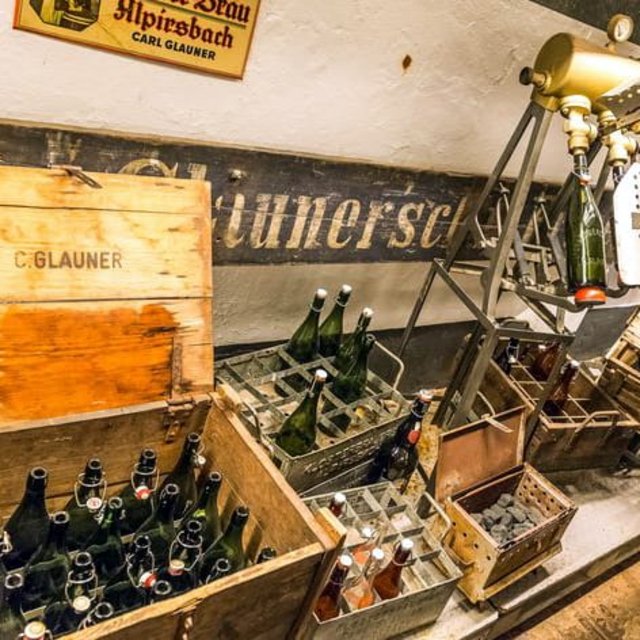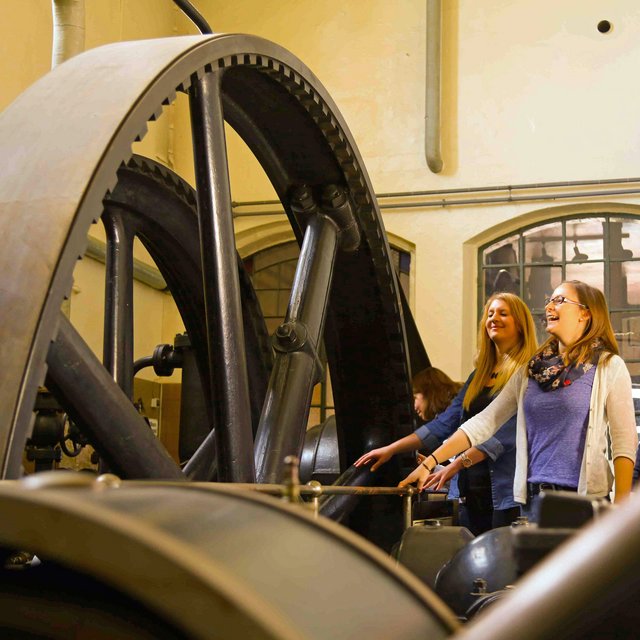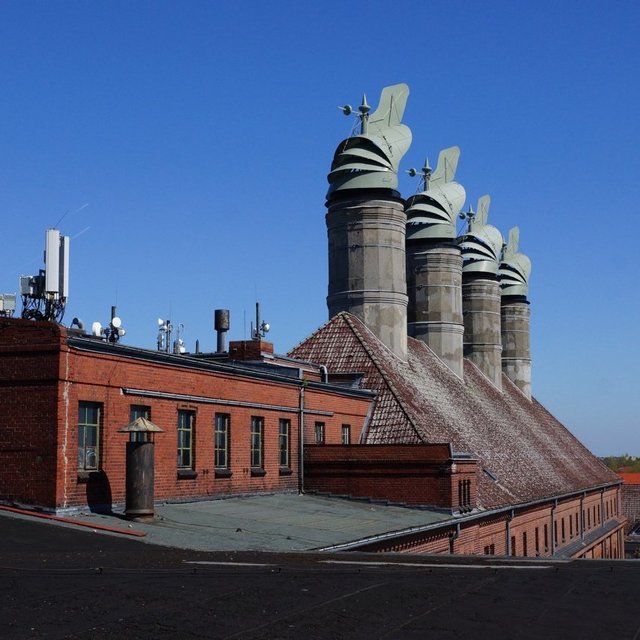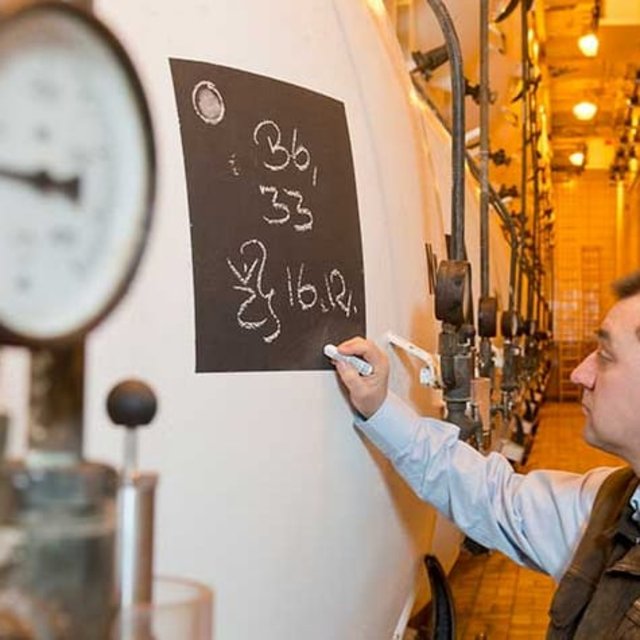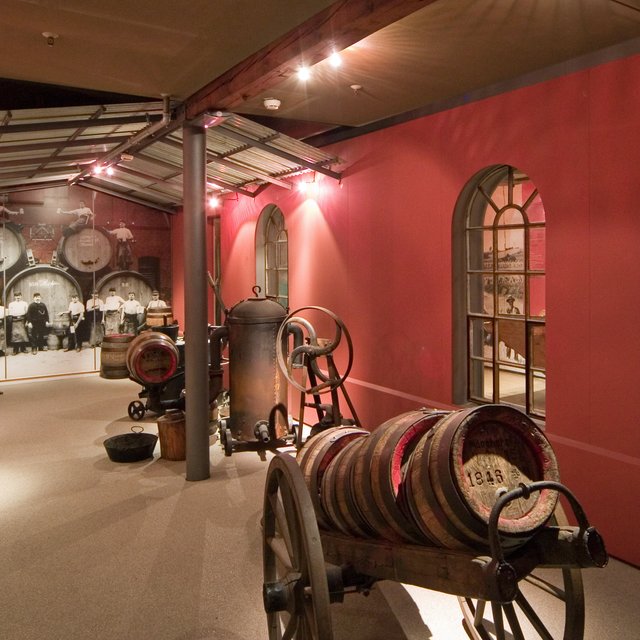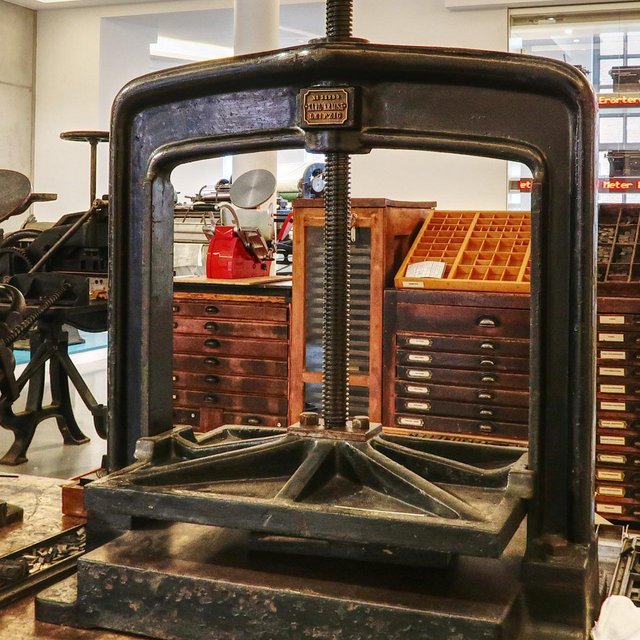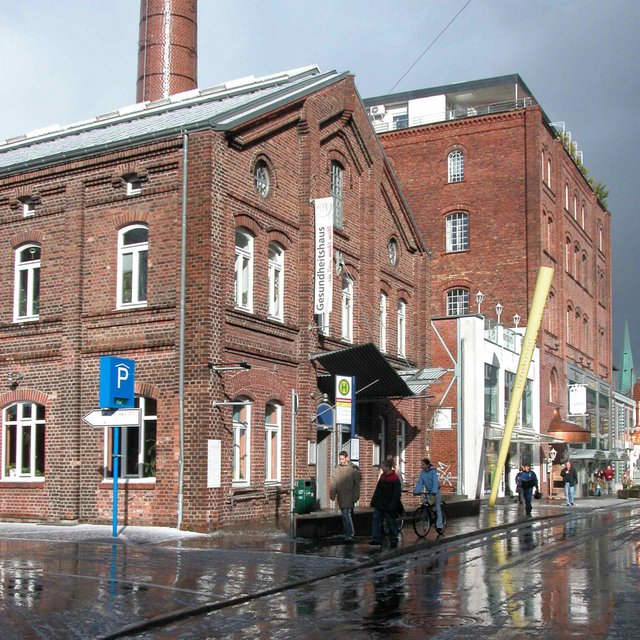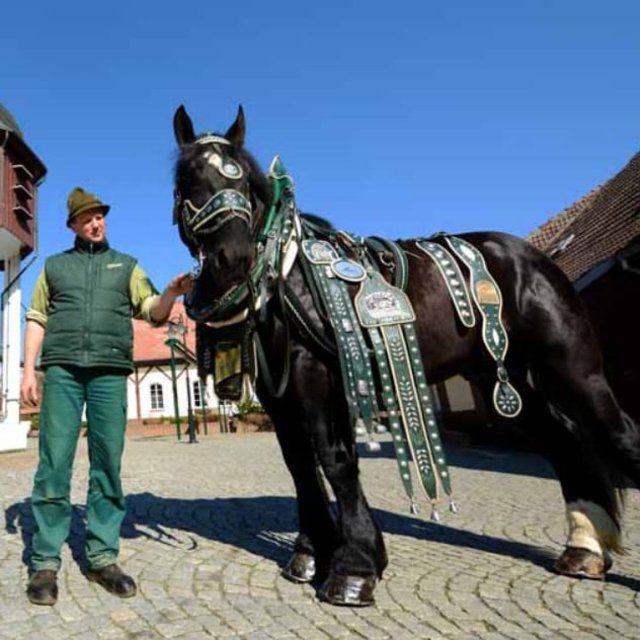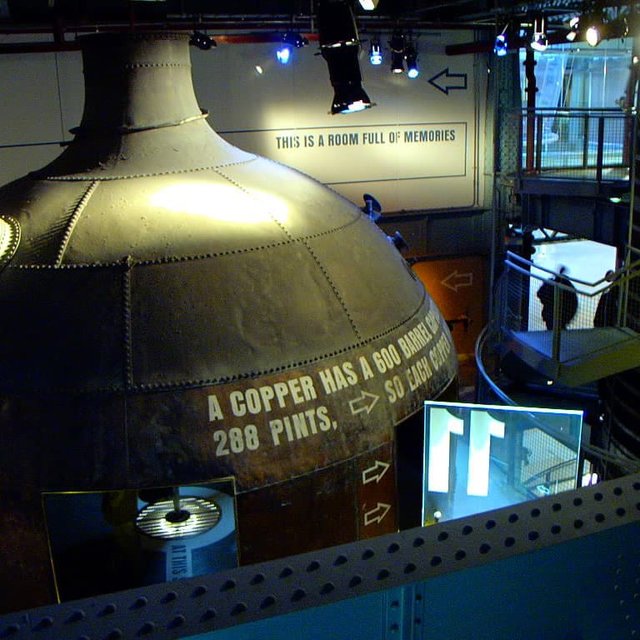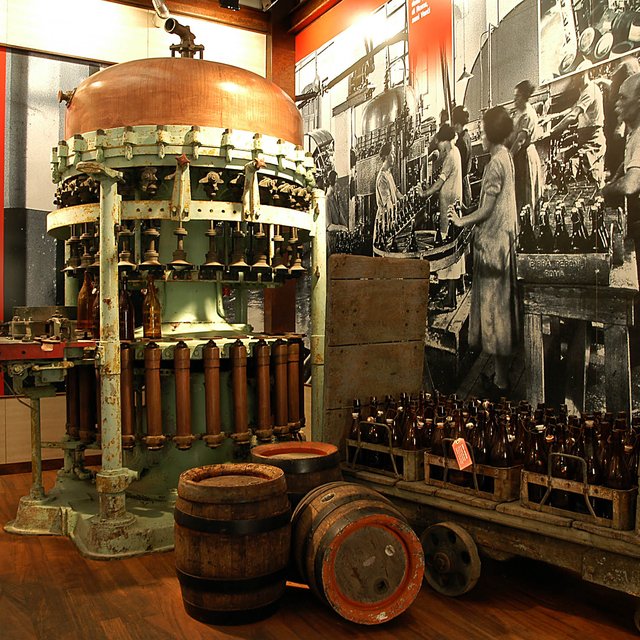European Themeroute Production and Manufacturing | Beer
Beer has been an enjoyable part of social interaction since ancient times and this fact is, naturally, reflected in the cultural landscape of Europe. In the Early Middle Ages, it was in particular monasteries where beer was brewed in volume; in fact, the remnants of beer production can be found in some ... more
 Beer - in many countries the most popular alcoholic beverage
Beer - in many countries the most popular alcoholic beverage
Beer has been an enjoyable part of social interaction since ancient times and this fact is, naturally, reflected in the cultural landscape of Europe. In the Early Middle Ages, it was in particular monasteries where beer was brewed in volume; in fact, the remnants of beer production can be found in some monasteries still today. Later, at the end of the Middle Ages, in connection with the founding of royal towns, royal breweries, burghers’ breweries and later also joint stock breweries gradually developed. The turn of the 18th and 19th centuries was the golden age of beer, with several factors having played a role in this. It was mainly the then modern beer production technology, as described for instance by Louis Pasteur, which was based on beer filtration and pasteurisation, which helped stabilise both the beer’s quality and characteristics. This was the time when major breweries were established with the aim to brew large volumes of beer, such as the Guinness brewery in 1759. Worth mentioning is the founding of the Burghers’ Brewery in Pilsen (today’s Pilsner Urquell brewery) in the year 1842, which gave birth to the entire beer category of bottom-fermented lagers, known as pils, pilsner or pilsener. In the 19th century, beer production was increasingly concentrated in larger breweries, which, to a great extent, have remained a significant enrichment of the European industrial landscape to this day. Some of the very first industrial breweries still exist today, either fulfilling their original function or not. The majority of breweries can be found in Germany, the Czech Republic, Austria, Belgium, the Netherlands, Poland, Great Britain and Ireland – all these being countries which have retained their leading position as concerns beer production and consumption volumes. The landscape of Europe is not enriched with breweries alone; it is also hop fields that impart to the landscape a very interesting and specific character.
The history of beer
Mesopotamia, the area between the Euphrates and Tigris rivers, is considered to be the place that gave the world beer. As early as around 7000 BC, the Sumerians, Akkadians, Babylonians and Assyrians cultivated grains there. Apparently, beer was actually discovered by accident owing to the former way of storing grain in clay containers. Water got into some of the containers, which started the process of fermentation, and thus the very first “beer” was born; although, from today, it was rather water with a pleasant intoxicating taste. Later, fermented beverages began to be prepared from grains on purpose. The Sumerians called this type of beer kash, while the Babylonians called it Shikarum.
Unlike the beer we know today, the Sumerians used no hops (which were not known back then) when making their kash. Thus, to make kash, barley bread and malt were put in a large jar in which this mixture was left to ferment. Without hops, the taste of kash lacked bitterness, and an alternative process had to be used to impart a bitter taste to the beverage. Typically, bread roasted in hot ash was used, with green mustard seeds or sesame seeds added to it.
Following the discovery of the process of malt fermentation, many types of beer sprang up, each different in colour and taste. Around 3000 BC, drinking beer was a widely spread custom. Back then, filtration was not part of the beer-making process, which is why large quantities of solid particles were present in the beer, making it cloudy. Therefore, beer was drunk through a grain straw. A thousand years later, the Code of Hamurrabi, dated 2000 BC, referred for the first time to public establishments where beer could be purchased. Among other things, the Code of Hammurabi also established penalties for dishonest publicans.
Further records of a beer-making process come from ancient Egypt – a country considered by some to be the cradle of beer. To make beer, Egyptians used barley to produce malt and various types of wheat as a substitute for hops. Due to the absence of hops, the beer’s taste was rather sweetish back then. In Antiquity, people showed little interest in beer as it was wine which dominated in popularity in the Mediterranean, and mead which was popular in those areas of Europe inhabited by the Celts. Yet, the Germanic tribes continued to prefer beer, both in terms of production and consumption. Other countries in which beer was widely consumed included those parts of Northern Europe under the rule of the Vikings. There, people preferred to drink their beer warm; at the same time, a method of freeze concentration was discovered, during which beer was left to freeze and, as a result of the different melting points of water and ethanol, the alcohol content in the beer increased, making it stronger. It is believed that the alcohol content of the beer back then was close to that of today’s lagers.
Craft brewing developed as new royal towns were founded in the 13th century which were granted a number of privileges from the monarch. Later, the same privileges were awarded to nobility-owned towns by the relevant nobility. In the 14th and the 15th centuries, the newly rich burghers would put their funds together to jointly establish town breweries. The end of the Middle Ages and the mid-16th century saw the development of beer production in nobility-owned breweries, while, simultaneously, beer production continued or even expanded in monastic breweries, which were less impacted by politics or by economic changes. That was also where hops began to be grown and used as a beer-making ingredient.
Beer gained significant popularity in the 19th century when supplies of beer’s main competitor – wine – almost dried up due to a vineyard pest named Phylloxera. At the same time, throughout the 19th century, people were becoming more and more knowledgeable in the process of beer production, fermentation and filtration, which made it possible for beer production to expand. The mid-19th century saw the golden age of brewing. At that time, many prominent breweries were established that remain in operation to this day. Large brewing operations took over production from smaller brewers which gradually ceased to exist.
World War II was a disaster for the brewing industry. During the war, many breweries interrupted production or started making low-gravity beers. Unfortunately, quite a number of breweries decided not to resume operation after the war. The second half of the 20th century saw trends starting to gradually change, and this has continued to this day. Consumers seek variety in flavour; they want to try out new beers and new, interesting tastes. Beer produced in industrial breweries enjoys less popularity compared with that made in micro-breweries, the number of which has grown significantly. This trend has been most apparent in Great Britain. At the same time, the beer category follows the trend of consumers inclined towards a healthy lifestyle, which is why we can see non-alcoholic beers, low-alcohol radlers and flavoured beer enjoying great popularity nowadays.
This Themeroute has been developed together with the ERIH Anchor Point Pilsner Urquell Brewery and Museum in Pilsen (CZ).
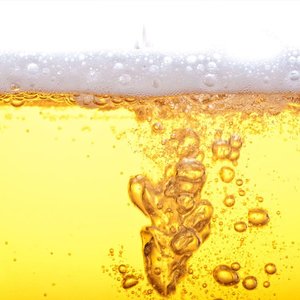
ERIH Anchor Points
Pilsner Urquell Brewery and Museum
Plzensky Prazdroj
U Prazdroje 7
304 97
Pilsen, Czech Republic
Heineken Experience - Heineken Brewery
Stadhouderskade 78
1072 AE
Amsterdam, Netherlands
Tyskie Brewing Museum
Tyskie Browarium
Ul. Mikołowska 5
43-100
Tychy, Poland
Żywiec Brewery Museum
Muzeum Browaru "Żywiec"
Ul. Browarna 88
34-300
Żywiec, Poland
Member Sites ERIH Association
Lobeč Brewery
Lobeč 34
27736
Lobeč u Mšena, Czech Republic
Radegast Brewery
Pivovar Radegast
Nošovice 238
73951
Nošovice, Czech Republic
Velké Popovice Brewery
Pivovar Velké Popovice
Ringhofferova 1
25169
Velké Popovice, Czech Republic
Culture Brewery
Schönhauser Allee 36
10405
Berlin, Germany
Sites
Mohren Brewery Museum
Mohren Biererlebniswelt
Doktor-Waebel-Strasse 2
6850
Dornbirn, Austria
Gösseum. Gösser Brewery Museum
Brauhausgasse 1
8700
Leoben, Austria
The Stiegl Brewing World
Bräuhausstrasse 9
5020
Salzburg, Austria
Bocholt Brewery Museum
Bocholter Brouwerijmuseum
Dorpsstraat 53
3550
Bocholt, Belgium
Timmermans Brewery
Brouwerij Timmermans
Kerkstraat 11
1701
Itterbeek, Belgium
Rodenbach Brewery
Brouwerij Rodenbach
Spanjestraat 131-41
88-00
Roeselare, Belgium
Gambrinus Drivers’ Museum
Musée des Camions de Brasserie
Fontaine Saint-Pierre 2A
5600
Romedenne, Belgium
Hop Museum
Chmelařské Muzeum
Námĕsti Prokopa Velkého
43801
Zatec, Czech Republic
Beer Brewing Exposition
Expozice pivovarnictví
ulice Hradní
66902
Znojmo, Czech Republic
Carlsberg Brewery / Carlsberg Visitors Centre
Gamle Carlsberg Vej 11
1799
Copenhagen, Denmark
A. Le Coq Beer Museum
Õllemuuseum A. Le Coq
Laulupeo pst 15
50050
Tartu, Estonia
French Brewery Museum
Musée français de la Brasserie
62 Rue Charles Courtois
54210
Saint-Nicolas-de-Porte, France
Stenay Beer Museum
Musée de la Bière
17 Rue du Moulin
55700
Stenay, France
Vosges Brewery Museum
Ecomusée vosgien de la brasserie
48 Rue de Mirecort
88270
Ville-sur-Illon, France
Alpirsbacher Brauwelt Brauereimuseum
Alpirsbacher Brauwelt Marketing GmbH
Brauereimuseum
1 Marktplatz
72275 Alpirsbach
Germany
+49 (0) 7444 67149
www.apirsbacher-brauwelt.de
brauwelt@alpirrsbacher.de
1 Marktplatz
72275
Alpirsbach, Germany
The Maisels Beer Experience
Maisels Bier-Erlebnis-Welt
Kulmbacher Strasse 40
95445
Bayreuth, Germany
Malting Plant
Bessemerstraße 2-14
12103
Berlin, Germany
Landskron Brau-Manufaktur
An der Landskronbrauerei 116
02826
Görlitz, Germany
Bavarian Brewery Museum in the Mőnchshof Brewery
Bayerischer Brauereimuseum im Kulmbacher Mőnchshof
Hofer Stasse 20
95326
Kulmbach, Germany
Museum Factory
Meyenburger Tor 3a
16928
Pritzwalk, Germany
Linden Brewery | Centre for International Light Art
Zentrum für Internationale Lichtkunst e.V.
Lindenplatz 1
59423
Unna, Germany
Wernesgrün Brewery
Bergstraße 4
08237
Wernesgrün, Germany
Guinness Storehouse
St James’s Gate
James Street
The Liberties
Dublin, Ireland
Peroni Beer Museum
Museo Birra Peroni
Via R Birolli 8
00155
Rome, Italy


